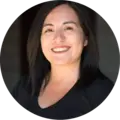Car Insurance / Types of Car Insurance / UI/UIM
Reviewed by: Max Cho, Licensed Insurance Broker NPN 20377411
Types of Car Insurance: Minimum Required Insurance / Liability Coverage / Uninsured Motorist / Collision / Comprehensive / PIP / MedPay
To make matters worse, state minimum insurance requirements are often egregiously low compared with the real costs of car crashes, so millions more are underinsured.
What is UI/UIM?
UI/UIM protects you (and your passengers) and your car if an uninsured or underinsured driver crashes into you. It also usually covers hit and run accidents.
Uninsured Motorist coverage pays your bills when someone else crashes into you and they don’t have insurance. In some states it also covers hit-and-runs — whether you’re driving your car or a pedestrian.
Underinsured Motorist coverage kicks in to pay your bills when a person who hits you has coverage, but not enough to cover your injuries or property damage.
There are two parts to UI/UIM coverage: Bodily Injury (UMBI) and Property Damage (UMPD).
Do I need UI/UIM?
States where it's required
UI/UIM is required in the following states: Connecticut, Illinois, Kansas, Maine, Maryland, Massachusetts, Minnesota, Missouri, Nebraska, New Hampshire (if you have car insurance), New York, North Carolina, North Dakota, Oregon, Pennsylvania, South Carolina, South Dakota, Vermont, Virginia (if you have car insurance), Washington D.C., West Virginia, and Wisconsin.
The rules are different in each state: - In some states UI/UIM is required (MD, NH*, NC, SC, VT, VA*, WV, and Washington DC). In Virginia and New Hampshire, car insurance is not required, but if you buy car insurance, you must have UI/UIM coverage.
- In some states, UI/UIM is not available or conditionally available. In Illinois and Utah you are only allowed to buy UMPD if you don’t have collision coverage.
- In some states, you can separately purchase UMBI and UMPD, but in some states you must bundle them together.
- In some states there are strict UMPD limits (like California at $3500) and in other states you can raise your UMPD limit to match your Property Damage Liability coverage.
- In some states, when you opt in to UI/UIM coverage, you must set your coverage limits to match your regular bodily injury liability coverage limits. That’s sound advice for anyone.
- In some states UMPD covers hit and run accidents.
Why you want UI/UIM whether it’s required or not
The Insurance Information Institute says nearly one in eight drivers is uninsured, but it varies wildly by state.
In California more than 16% of drivers are uninsured. In Florida that number jumps to more than 20%. In Washington, almost 22% of drivers are uninsured. In Mississippi that number is almost 30%!
In places like California with very low minimum insurance requirements, many more drivers are underinsured. Imagine a scenario where you get in a crash and the person who caused the accident carries the minimum $5k limit for property damage. If you don’t have Underinsured Motorist coverage, you’re on the hook for the rest of the value of your car.
The alternatives to UI/UIM in this type of scenario are making a claim against collision coverage (which will make your premiums go up) or paying out of pocket.
How much UI/UIM coverage do I need?
Because this insurance is designed to protect you and your car, you should only pay for coverage you need to keep yourself out of financial trouble.
Both Uninsured and Underinsured Motorist coverages include Bodily Injury (UMBI) and Property Damage (UMPD) with coverage limits set separately, just like your regular liability insurance.
UMBI recommendations - If you have good health insurance, you probably don’t need to max out your UMBI. Double check with your health insurance policy that it covers car-related injuries — some don’t!
- If you have health insurance with a high deductible or would struggle to pay out-of-pocket health costs, consider MedPay instead. It can cover immediate medical costs for you and your passengers, regardless of fault and without deductibles and is relatively inexpensive.
- If you don’t have health insurance, you should definitely have UMBI coverage and the amount should be as much as you can afford — though your maximum will be limited by your regular Bodily Injury liability limits. Hospital bills can get pricey after a crash.
UMPD recommendations
This gets tricky as different states have different rules. For example, in some states UMPD covers your car in hit-and-run accidents, while in others (California and Illinois) it doesn’t kick in if the driver is never identified. In some states UMPD also has a deductible, but it’s typically a lower amount, between $200 and $500. - If you don’t have collision coverage, UMPD is a good idea. Generally, you set UMPD to whatever you want it to be, up to the amount of your property damage liability coverage, but some states have a maximum coverage limit. Ideally you’d set your UMPD to the value of your car. Every state is different, however, and some (like California) only allow you to purchase a small amount of coverage, or require you to purchase separate endorsements to cover aftermarket add-ons.
- UMPD also covers property like your house or fence, if they’re hit by an uninsured/underinsured driver. While your homeowners insurance covers that type of damage as well, it can add an extra level of protection if you live in a high-traffic area.
- If you have collision coverage, you probably don’t need UMPD. Collision covers you in all accidents, where UMPD only covers you when you’re hit by an underinsured driver. Claims against collision coverage can significantly increase your premiums for 3-7 years, while claims against UMPD might raise your premium, but by a lesser amount.
How much does UI/UIM cost?
UI/UIM isn’t terribly expensive, but more importantly it’s one of the better values in insurance. It’s cheaper than your regular liability insurance but you can elect the same amount of coverage. Here is a comparison of premium prices at various levels of liability coverage.
Car insurance premiums for liability coverage with and without UI/UIM
It’s shocking, but the coverage with UI/UIM costs less when your liability coverage is super high! As Coverage Cat founder Max Cho likes to say, “insurance prices are weird.
| Average Premium Increase for UI/UIM by Liability Coverage Limits | ||||
|---|---|---|---|---|
| 25/50/25 | 50/100/25 | 100/300/100 | 250/500/100 | |
| Without UI/UIM | $59 | $88 | $80 | $152 |
| With UI/UIM | $80 | $125 | $130 | $98 |
Where our data comes from
Coverage Cat has a unique database of hundreds of thousands of real auto insurance quotes derived from public data. We use this dataset and others to match Coverage Cat users with the best insurance for their needs.
All of our quote data assumes the driver is: single, college educated, has a clean driving record, and has been driving since 16 years old. Age, gender, location, and miles driven per day are variable. Our prices do not consider any discounts which might apply to you such as those for being a veteran, having multiple policies, loyalty, etc.

Want to find the best insurance? Need help?
Coverage Cat shops for you. We search across dozens of major insurers and use data science to compare millions of real quotes. The result? The best combination of policies, coverage, and price for your personal financial situation.
Our promise:



